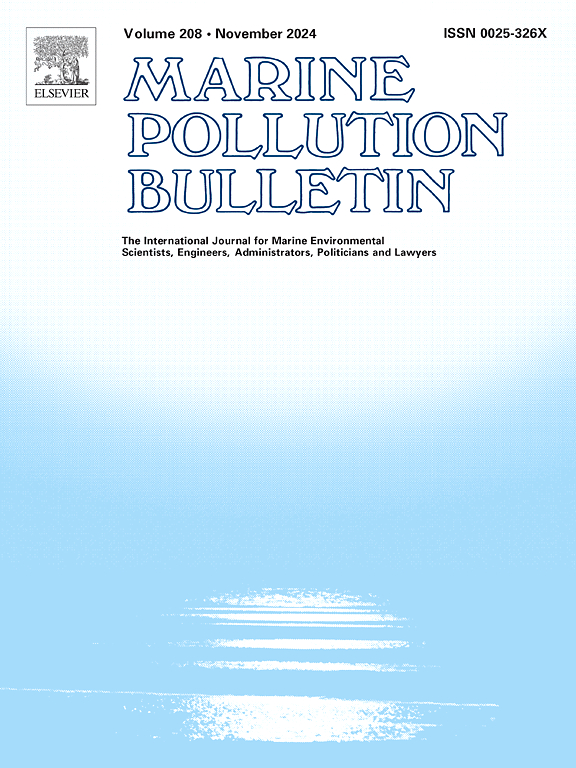Impacts of Artificial Light at Night (ALAN) on coastal ecosystems: A study on the herbivore Ampithoe valida with focus on sex-dependent responses
IF 5.3
3区 环境科学与生态学
Q1 ENVIRONMENTAL SCIENCES
引用次数: 0
Abstract
Artificial Light at Night is recognized for its impact on various ecosystems, with coastal areas being particularly vulnerable. While a growing number of studies have identified Artificial Light at Night's impacts on species inhabiting these ecosystems, a critical gap is the limited attention that has been given to intraspecific variability in response to this stressor. This study focused on the sex-dependent influence of Artificial Light at Night on food consumption rates and absorption efficiency in males and females of the non-indigenous amphipod求助全文
约1分钟内获得全文
求助全文
来源期刊

Marine pollution bulletin
环境科学-海洋与淡水生物学
CiteScore
10.20
自引率
15.50%
发文量
1077
审稿时长
68 days
期刊介绍:
Marine Pollution Bulletin is concerned with the rational use of maritime and marine resources in estuaries, the seas and oceans, as well as with documenting marine pollution and introducing new forms of measurement and analysis. A wide range of topics are discussed as news, comment, reviews and research reports, not only on effluent disposal and pollution control, but also on the management, economic aspects and protection of the marine environment in general.
 求助内容:
求助内容: 应助结果提醒方式:
应助结果提醒方式:


